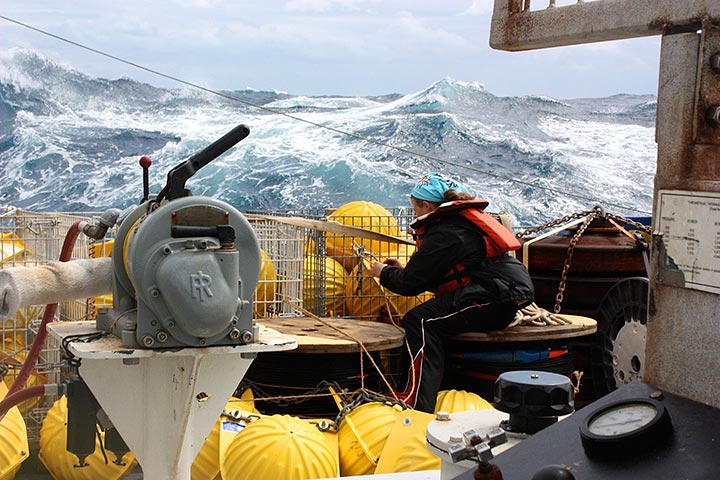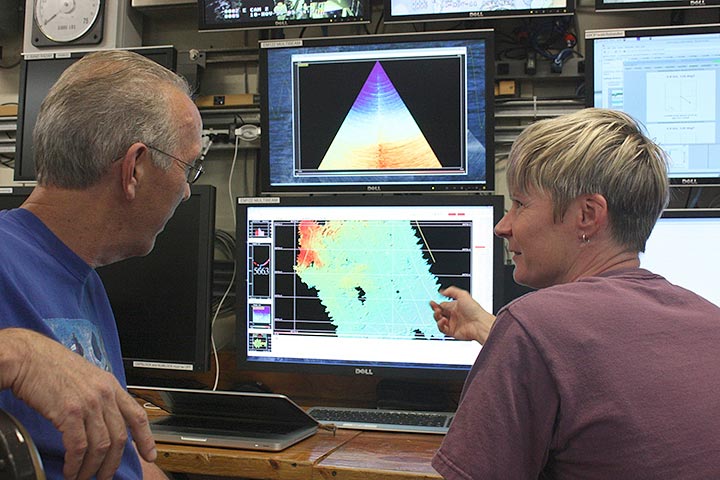
We lay this chilly morning barely a mile off the sand dunes and gently rolling hills on the South African coast under glowering skies and light winds. The ship sailed lazy figure eights crossing a point where Lisa planned to plant a bottom lander containing a pressure gauge which accurately measures sea-surface height. The ship maneuvered per her requests as she and Frank, the ship’s computer tech, ran a multi-beam sonar scan of the sea floor in the main lab searching for a flat, hard spot to safely place the instrument. A few of us watched the computer screen over their shoulders until—
“Have you seen the whales?” Joni asked. They’re right off the stern.”
Humpbacks, a mother and calf, rolled and cavorted in the whitecaps slapping those great, white pectoral fins, then their flukes, on the water. The mother repeatedly performed each action and the calf imitated her, or so it seemed to us. Was this a series of lessons in close-range communication? Or merely a morning’s play? Then forward of the mother and calf several more humpbacks breeched in unison halfway out of the water and fell back with explosions of spray. What did they make of this ship and those sonic pulses from the multi-beam? Did they agitate the whales? Or perhaps these big-brained animals, having been communicating acoustically epochs before the first proto-humans roamed the African savannah were amused by our primitive pulses.
“They’re my first whales,” said Konstantina with a sun-bright smile as I passed her my binocs.
The show ran for a half an hour before the performers moved off. There are moments like that out here when the ocean delights us with things otherwise unseen. And then there are those other times…
The wind blew about fifteen knots while we watched the whales. But soon after Robert, Mark, and their team launched the pressure sensor, the velocity lurched to thirty knots. When that happens here on the confused inshore edge of the Agulhas where water seems to flow in three different directions within a ship’s length, waves rear up very quickly. Melville commenced to roll. I mean really roll. She’s sailing light in fuel anyway, since at the close of this cruise, she’s scheduled for a shipyard stay in Durban. The fuel tanks, distributed lengthwise and low in the hull, might have afforded more stability if full. But these hulking seas on the beam would have rolled any ship her size.
Things began to come adrift. Two-thousand-pound mooring balls, despite spider webs of lashing straps, slipped from their pallets, and a couple of spools of oceanographic wire shed their lashings at the bulwarks and rolled inboard with a savage will of their own and back again before members of the science staff managed to stifle them. Fortunately, even surprisingly, no one was injured and nothing was broken. But the seas, which didn’t lie down until after dinner, ended this day’s work.
Here in the course of several hours we’d witnessed a span of ocean experience from the sublime to the chaotic. Things change quickly, and that’s another reason why mariners and oceanographers, another breed of mariner, tend to be professionally conservative.








